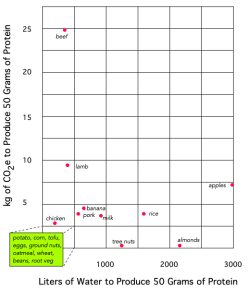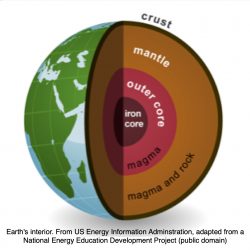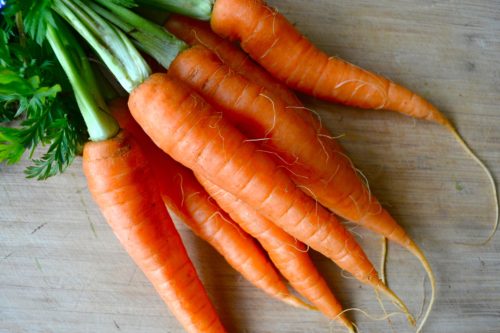Proteins are made up of long chains of amino acids, which are essential building blocks for the body. There are nine essential amino acids that the body cannot produce on its own and must be obtained from the diet. These essential amino acids are required for the synthesis of proteins that support tissue growth and repair, hormone and enzyme production, immune system function, and other physiological processes. Dietary protein also plays a crucial role in muscle protein synthesis, which is the process by which the body repairs and builds new muscle tissue. This is particularly important for athletes and people who engage in regular physical activity, as their muscles undergo more wear and tear and require more protein for repair and growth. In addition to its structural and functional roles, dietary protein can also be used for energy when other energy sources such as carbohydrates and fats are not available.
Well, in case you didn’t recognize the style, that is ChatGPT’s answer to the question of what the primary role of protein is in the diet. It’s not bad, if somewhat bland (maybe that means it doesn’t stand out in the context of this website). The rest of this post is constructed by a human (me).
The roles of protein in the human body’s metabolism
Humans, unlike plants, cannot turn atmospheric nitrogen into the amino (-NH2) groups that are a critical part of protein. The amino group is the basis for calling the building blocks of proteins amino acids. The human body can produce some amino acids from other molecules, but it requires an external source of amino groups to do this. It obtains them from dietary protein.
Dietary protein is digested to its component amino acids, which can either be used to form new proteins, or oxidized to CO2 to produce energy. And although the carbon skeletons of many of the 20 amino acids required for protein synthesis can be produced through standard metabolic pathways in humans, several cannot: these are the 9 essential amino acids that ChatGPT mentions.
Energy for human life is obtained from fat, carbohydrate, and protein. All three are used for producing energy, but of course only protein provides the essential amino acids. Both extra dietary fat and carbohydrate are stored in the body for later use. But there are no storage tissues for amino acids. They are used almost immediately either to synthesize proteins or closely related molecules, like peptide hormones, or to produce energy. This indicates that protein intake should be continuous for anyone looking to build muscle, a fact emphasized by protein supplement advertisements.
Starvation
During long-term starvation, most energy requirements are met by oxidizing fat, which is the main energy storage form in the body. But proteins also play an essential role. This is partly because of the need for carbohydrate, in particular blood glucose, to nourish some tissues, including the red blood cells and the brain. This requirement persists even when there’s no carbohydrate coming in through the diet.
Liver glycogen (a stored form of glucose) is exhausted after a day or so of starvation. Glucose can be produced, in small amounts, from the fat being oxidized to provide energy, and a couple of other sources. But during a long-term fast, amino acids from the body’s proteins play an important role in providing glucose. They are broken down to ammonia (which is excreted) and the glucose needed to sustain life. The degradation of proteins to provide glucose is essential. As a result, a previously healthy, well-fed adult with access to water may last for 2 or 3 months, but eventually, this cannibalism becomes life-threatening, as critical tissues are damaged through loss of protein.
Sources of protein
The amount of protein required in the diet depends on factors such as body weight, physical activity, age and pregnancy. Different information sources sometimes provide different numbers for the basic protein need of an adult human, and there’s not much evidence on exactly what that number is. The typical recommended daily intake for the average American adult male, who weight 198 pounds (!) is about 72 grams. For the average American woman, about 62 grams. The average omnivorous diet will provide these levels, but for vegetarians and vegans, some care is needed to ensure that the requirement for a balanced intake of the amino acids in proteins is met. (There are hundreds of web sites that claim to do this.)
My interest here is in the environmental impacts of different sources of protein; particularly, how they affect the production of CO2 (in terms of CO2e, to take into account the effects of other gases that have global warming potential, particularly methane) and water use. Both of these environmental factors are becoming increasingly important as the world warms and water shortages threaten.
Environmental impacts of different foods
Protein can be obtained from most foods, but the yield varies greatly. At one end of the spectrum, an 8 ounce (250 gram) steak provides 62 grams of protein, probably enough for this day. On the other extreme, lettuce has very little protein, and you’d have to eat 5 kilograms (11 pounds) of it to get the requisite protein for an adult male. No wonder rabbits are constantly eating.
There’s another way of looking at the data, which is to ask, how much of an environmental impact is there, in terms of CO2e produced and water used, when various foodstuffs are used to deliver 50 grams of protein? (Around the amount required per day for a 62 kg – 136 lb – person.) The data for water use are difficult to obtain, not surprisingly, but have been checked with several sources, the main one being here. The graph shows the results, and they are striking.

What the data show us
There are some wild variations. Firstly, there is a group of foods that neither produce much global warming gas nor consume much precious water, including grains such as wheat and oats, ground nuts (i.e. peanuts), potatoes, corn, eggs, beans (and other pulses), and root vegetables. Tofu is the champion of low levels of CO2 production and water consumption. Chicken, bananas, pork and milk are almost as virtuous.
Tree nuts also generate little CO2e, but do use quite a bit of water. We hear a lot about almonds; it takes 12 liters, 3.5 gallons, of water to grow 1 nut! (It’s true.) The most problematical issue with almonds is the massive number of them being grown; the California Water Impact Network estimates that 17% of agricultural water in California goes to growing almonds, representing 13% of the total water consumption of the state.
Apples, however, are the queen of water consumption (ignore lettuce), at least in terms of protein provided. Of course, we don’t eat apples, or lettuce, for their protein content. A lot of almonds, on the other hand, are consumed by people who rightly like them for their health benefits, including protein content.
The elephant (or bovine) in the room is beef. We are all probably aware, in a subjective way, that a lot of CO2e arises from beef production. This graph provides the quantitative picture. Just why beef is so much higher than other forms of meat, including lamb, pork, and particularly chicken, is not obvious. Even if we grow steers in the Midwest, where water is still relatively plentiful, the effect on the world’s greenhouse gas cloud remains. Milk, the other product of the bovine industry, comes much closer to being a ‘virtuous food’, and eggs are surprisingly nice.
Rice is a staple food for over half the population of the world. It’s production is in trouble (there’s a ‘global rice crisis’, according to The Economist) because of a lack of further arable land, water shortages, and the spoiling of soil by fertilizer and toxins. It is thought to be sensitive to global warming, as well. From the graph, rice production consumes a lot of water per unit of protein, not surprisingly given the mode of production in flooded paddies. But it also produces more CO2e than other grains. This is because the ground under the flooded surface is anaerobic, and the microbes growing there produce methane.
Go To Contents




